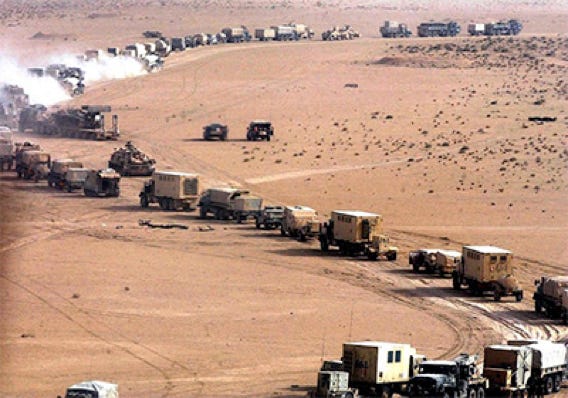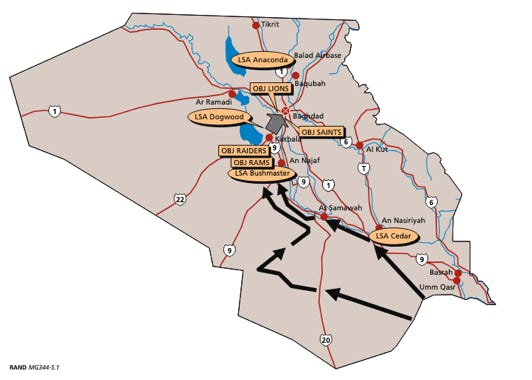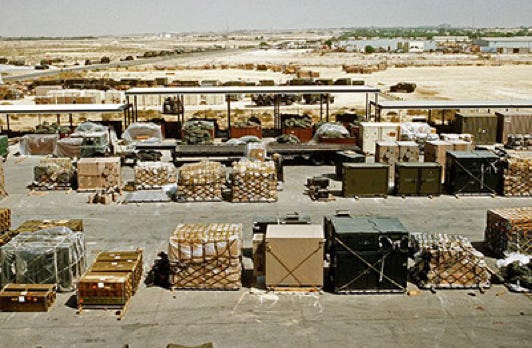Talking Proud: Service & Sacrifice
Logistics in the Iraq War: “A Herculean feat”
“Good generals study tactics. Great generals study logistics”
Logistics Plan
“Every truck has a personality!”
This opening map provides an overview of the combat and logistics plan.
The U.S. had to build its logistics network within Iraq after the combatants took their “running start.” It was hoped this strategy would achieve tactical surprise.
Combat operations began before all hands, combat, and support were in place. To complicate things for the troops, the ground offensive started on March 19, 2003, a day before the air offensive. It started one day early to achieve greater tactical surprise. Support forces had to chase after the combatants.
In my book, everyone participating in Operation Iraqi Freedom (OIF) was a combatant. To make my life easier, however, I refer to the 3rd Infantry Division (3rd ID) forces as combatants or combat forces and the rest as support. Support forces were often very close to or in combat, so I apologize if this style is annoying.
One Pentagon planner was quoted by Robert Little of the Baltimore Sun saying:
"This isn't just a refueling operation, it's a massive re-supply chain … We're talking about thousands of tanker trucks, container trucks filled with ammunition and supplies, medical equipment, spare parts, water, food - we're still trying to give them one or two hot meals a day.
“[This] was one of the most complicated and critical components of the invasion.”
The Army employed “Distribution-Based Logistics," or DBL. The RAND Corp. issued a report on force sustainment during OIF that addressed this arrangement.
Remember that the OIF strategy was built on the “need for speed” and “tactical surprise.” There was no time to set up massive stockpiles of supplies forward. The plan was to distribute supplies frequently from a series of Logistics Supply Areas (LSAs) while on the run. Logisticians had to follow the combatants, set up the LSAs, and work with them to supply the troops forward.
The idea was to encircle Baghdad with well-provisioned combat units, establish LSAs with robust supplies, feed the combatants around Baghdad, and then go into Baghdad.
The map shows that the 3rd ID combat units were to reach Objectives LIONS, RAIDERS, and SAINTS surrounding Baghdad.
LSAs ANACONDA, DOGWOOD, and BUSHMASTER were to be established relatively close to those Objectives.
The LSAs were a centerpiece of the logistics effort. They operated as transportation hubs, providing supplies to forces close to or within an area of armed conflict.
Once the first tanks breached the berm, the logistics forces followed their lead with fuel tankers, water trucks, and other support. The combat force secured the areas designated as LSAs well enough for the logistics people to roll in and set up shop. The combat force then left that area and pushed northward. The logistics support troops used these LSAs to chase back and forth to keep the front line supplied.
Forward LSAs were to be set up about every 50 miles, stocked with some supplies, and able to do some maintenance. On occasion, they were setting up the LSA while combat forces were still fighting on its outskirts. This photo shows an LSA during the first Iraq War, Desert Shield, so you get the idea.
Let’s get real: The 6th Transportation Battalion
Click to zoom graphic-photo





